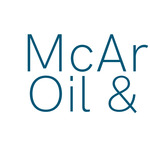The frontier area has been likened geologically to the Marcellus shale in the US, one of the most prolific gas basins in the country and which helped underpin a wider American switch to gas over coal as the prolific new energy source proved more economic.
Closer to home gas royalties from a significant development would add a very large, independent source of revenue, although it is years away yet.
The Northern Territory's chief executive of the Department of Primary Industry and Resources Alister Trier has been following the development of shale resources for years. He notes the Northern Territory's main gas developments are in Commonwealth waters offshore Western Australia In the case of Inpex Ichthys, or the Bayu Undan project now largely within Timor-Leste's jurisdiction. Both send gas to shore for liquefaction and export.
There have been onshore wells drilled since the 1970s targeting the Coxco formation in the wider Territory, but shale is relatively new with the first well in 2009 just a few years after the US shale revolution really took hold, moving from a relatively unproven technique to a way to access vast new amounts of onshore oil and gas stateside.
Development of a large onshore, exportable resource would be a serious opportunity for the Top End and one successive governments have been working to develop, while trying to instill public confidence in fraccing and unconventional gas extraction. This has not always been easy; there have been four separate inquiries into fraccing to establish the practice's safeness.
The government is "leveraging as much opportunity as we can for Territorians" , Trier says.
"There are three areas: we're looking at things we need such as infrastructure, the stakeholder and strategic negotiation point of view and the commercialisation angle."
"If the numbers stack up, and they're looking increasingly positive, this will make such a significant difference to the Northern Territory's own sources of revenue, which is such a game changer because it reduces our reliance on GST as being the fundamental revenue provider for the Northern Territory."
Currently there are three exploration teams in the Beetaloo proper: Operator Santos and junior partner Tamboran Resources, Origin and Ireland's Falcon Oil and Gas, and Empire Energy, which is flying solo at Carpentaria-1.
In the wider NT the newly formed McArthur Oil and Gas, spun out from Armour Energy and joining the ASX early next year, holds over 90,000sq.km acreage in two larger basins. For reference, this is larger than the Kingdom of Jordan.
There are serious knock on benefits as well for businesses directly working with the E&P sector and wider service companies. He noted an Inpex study recently released that noted the economic benefits to the Territory from its own fields alone from 2020 to 2030.
The Japanese company commissioned the report from Acil Allen. The consultancy found a $2.8 billion income impact to 2030 at $251 million on average per annum, $87.1 billion in Gross Territory Product impact to 2030 at $7.9 billion on average per annum and $7.1 billion total tax revenue paid to 2030.
"They're really quite astounding, and that's only 10 trillion cubic feet", which is small beans compared to the possible resources across the wider Northern Territory, Trier believes.
"Then we saw Bayu Undan being developed offshore and that project is still investing now a quarter of a billion (dollars) in drilling."
Santos' last infill campaign is a three-well directional drilling project using a Valiris rig designed to extend the life of the field that feeds the one-train Darwin LNG plant by a couple more years.
"The other component is that there it is in the heart of the Northern Territory; there is an opportunity as never before," he said.
Onshore exploration isn't new. Central Petroleum has been exploring the Amadeus Basin for decades, targeting conventional resources.
There were "very humble beginnings in the Amadeus Basin years ago".
"We sort of started to get indications in 2009 that the Beetaloo was significant and over time that confidence has lifted."
It has not been without pitfalls. Even by 2009 word was making it around that fraccing might not be safe and Top End community concern grew.
"We knew even then in 2009 we had some regulatory challenges and even that it was going to be an unconventional play and that hydraulic fracturing was controversial
"We took it upon ourselves to get as across it as we could, lessons learned, mistakes, things like that.
"We had four inquiries over 10 years, it's been quite frustrating for industry but the government needed social license."
The most recent inquiry, led by Justice Rachel Pepper, found that provided its 139 recommendations were stuck to, the practice was safe. The moratorium was lifted in 2018.
"The (last) inquiry was very rigorous and it set out to do two things... make a judgement on whether fraccing is able to be undertaken in a safe manner and like the inquiries before it it came up with the answer yes.
It also mapped a process to develop an appropriate regulatory regime and a social license process.
"It's been one of the most comprehensive efforts across a range of departments that I've ever seen in my time in government. And it's on track."
This article was developed from a special edition feature discussion for the annual Northern Territory Resources Week and SEAAOC.
DISCUSSION PARTNERS:
|
|
|
|

























